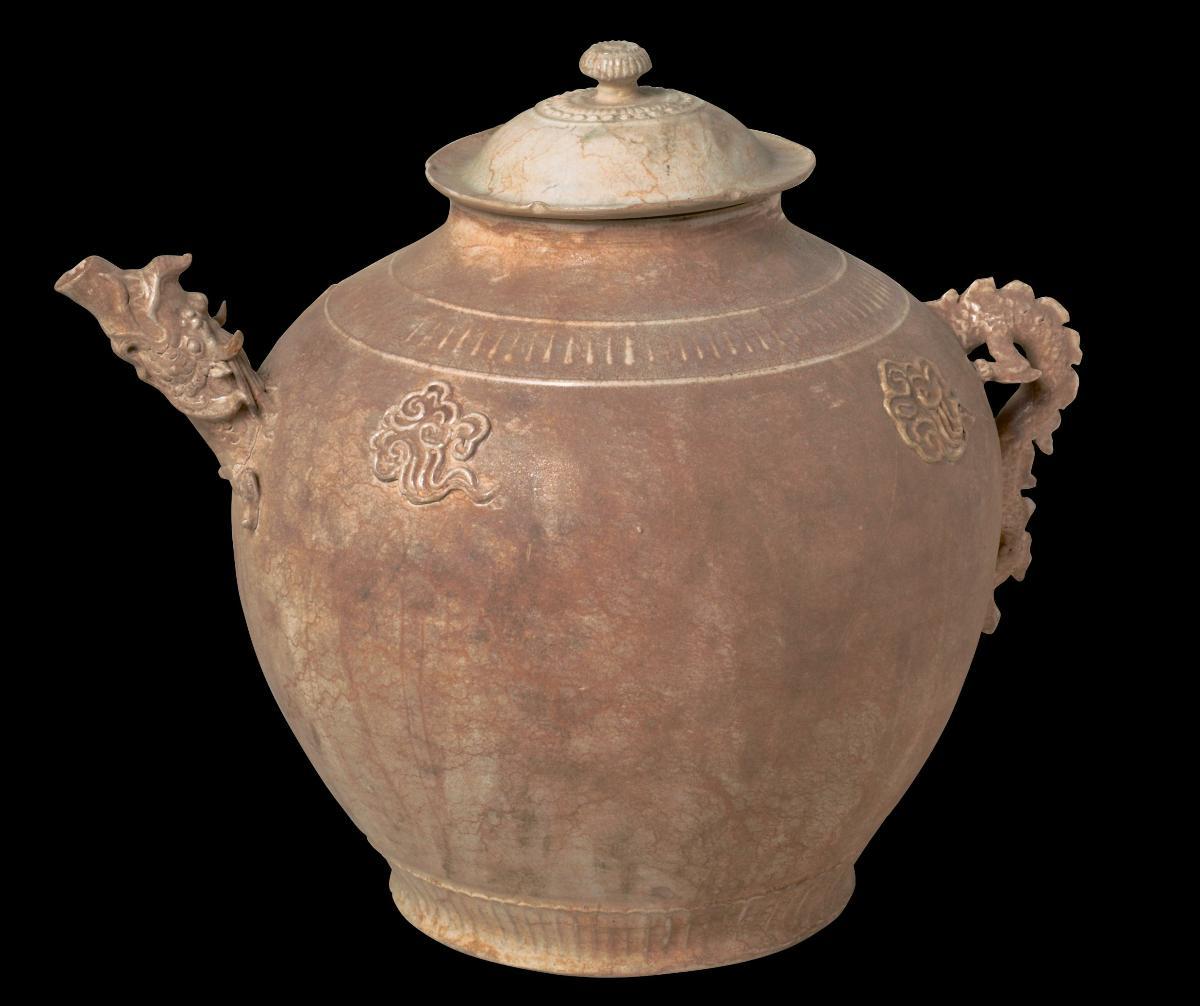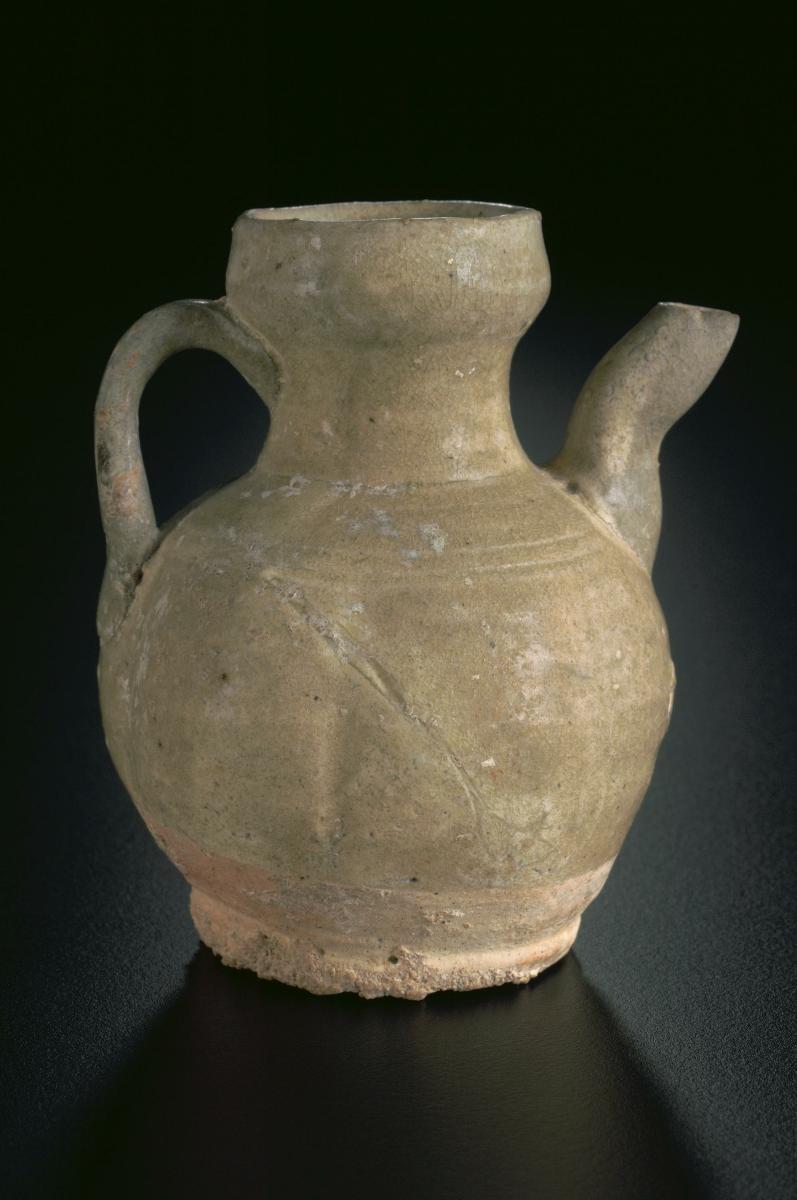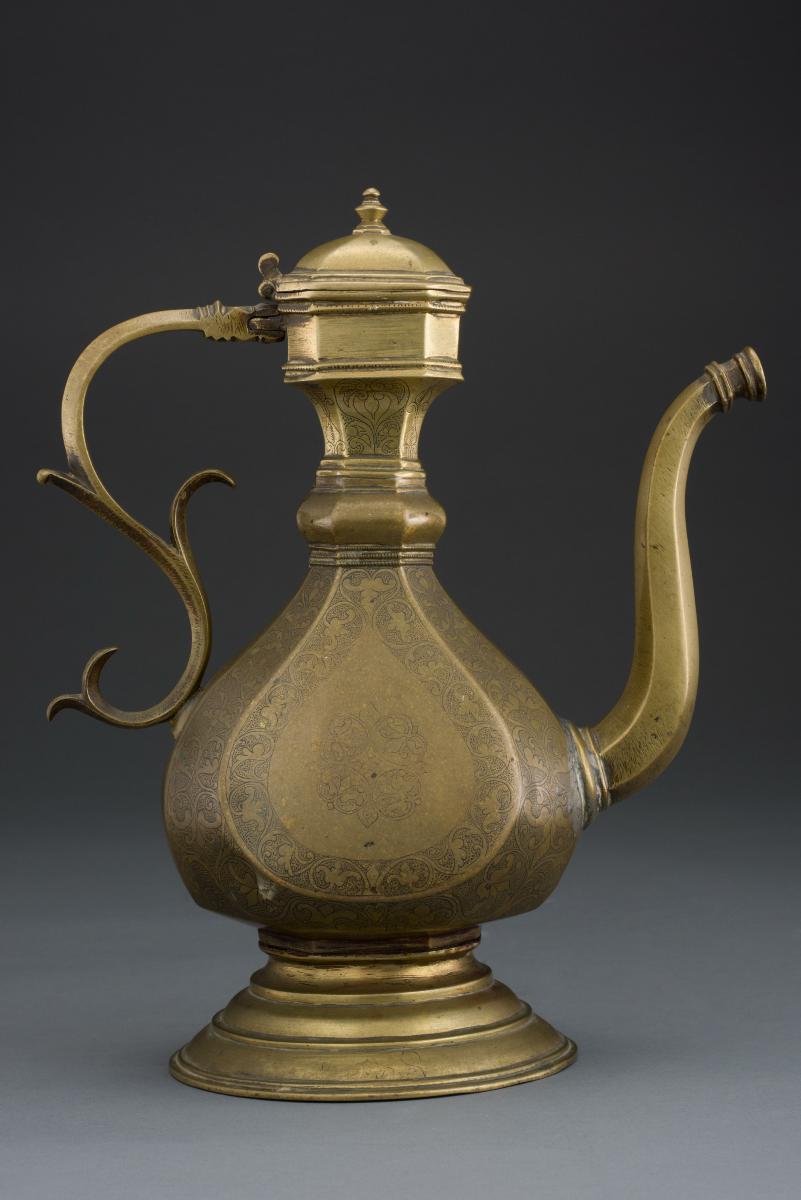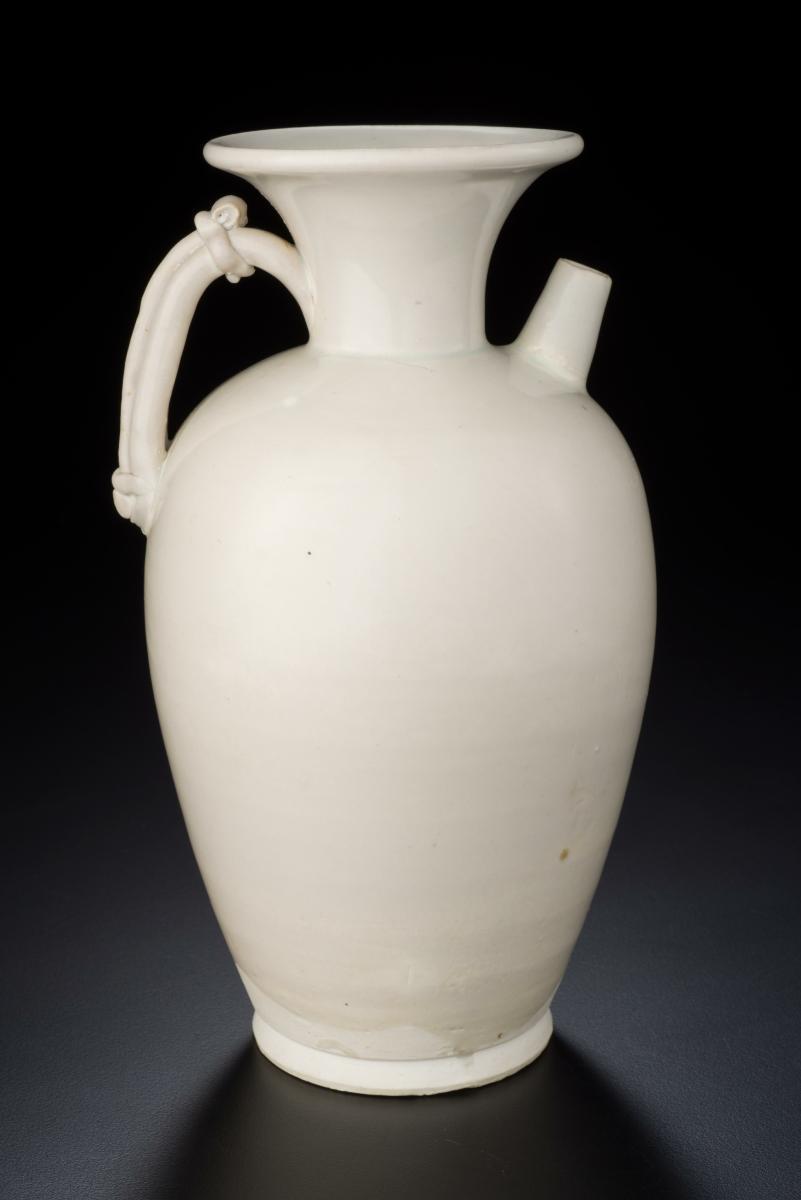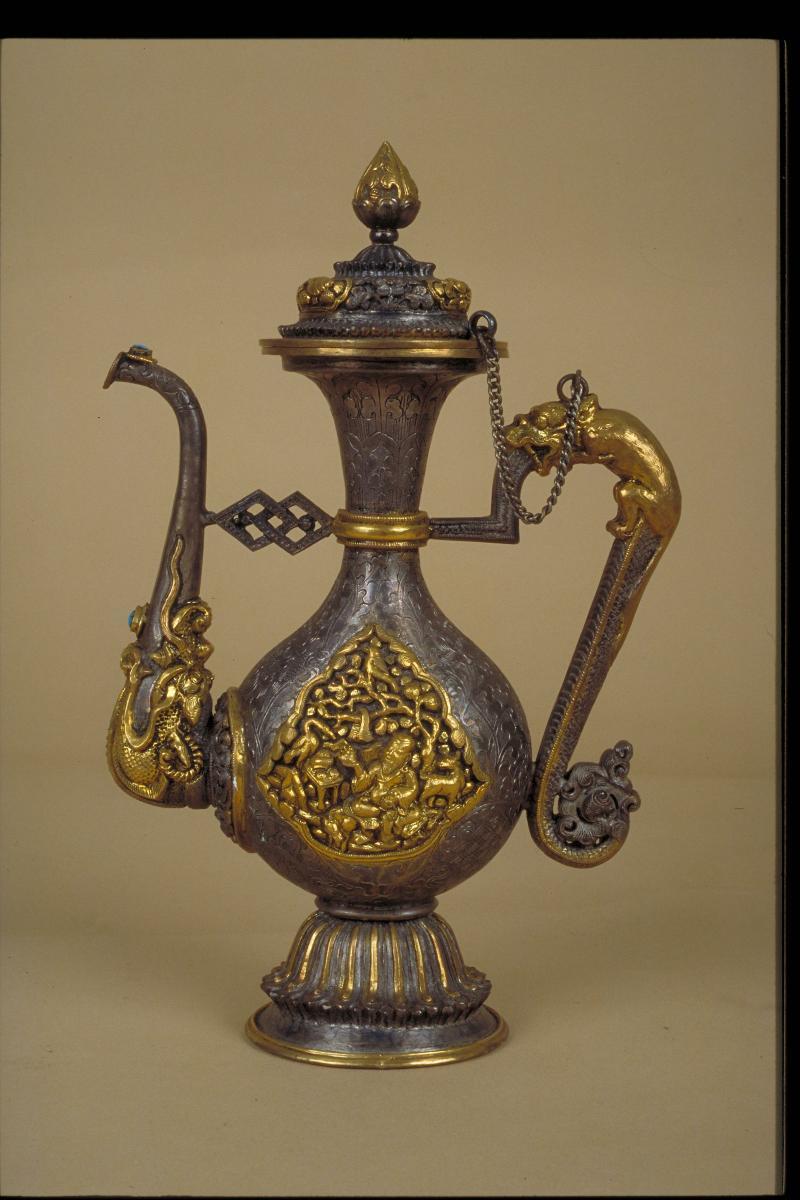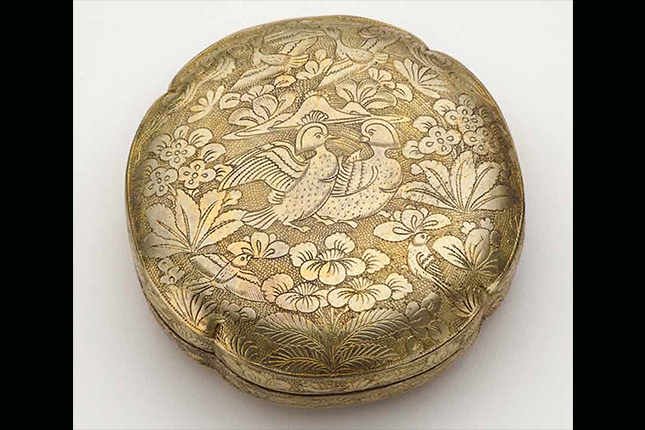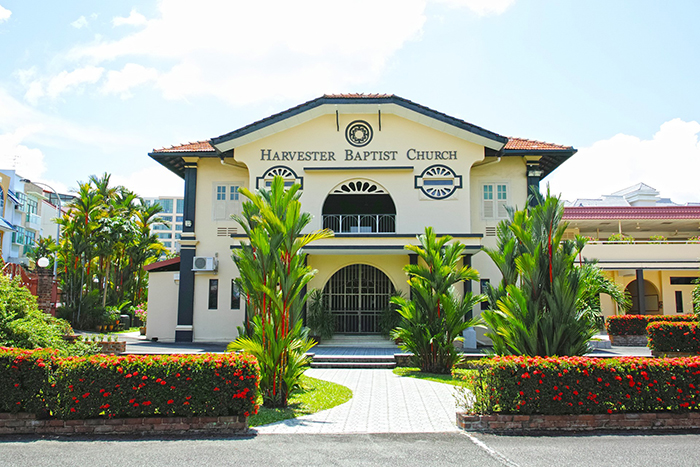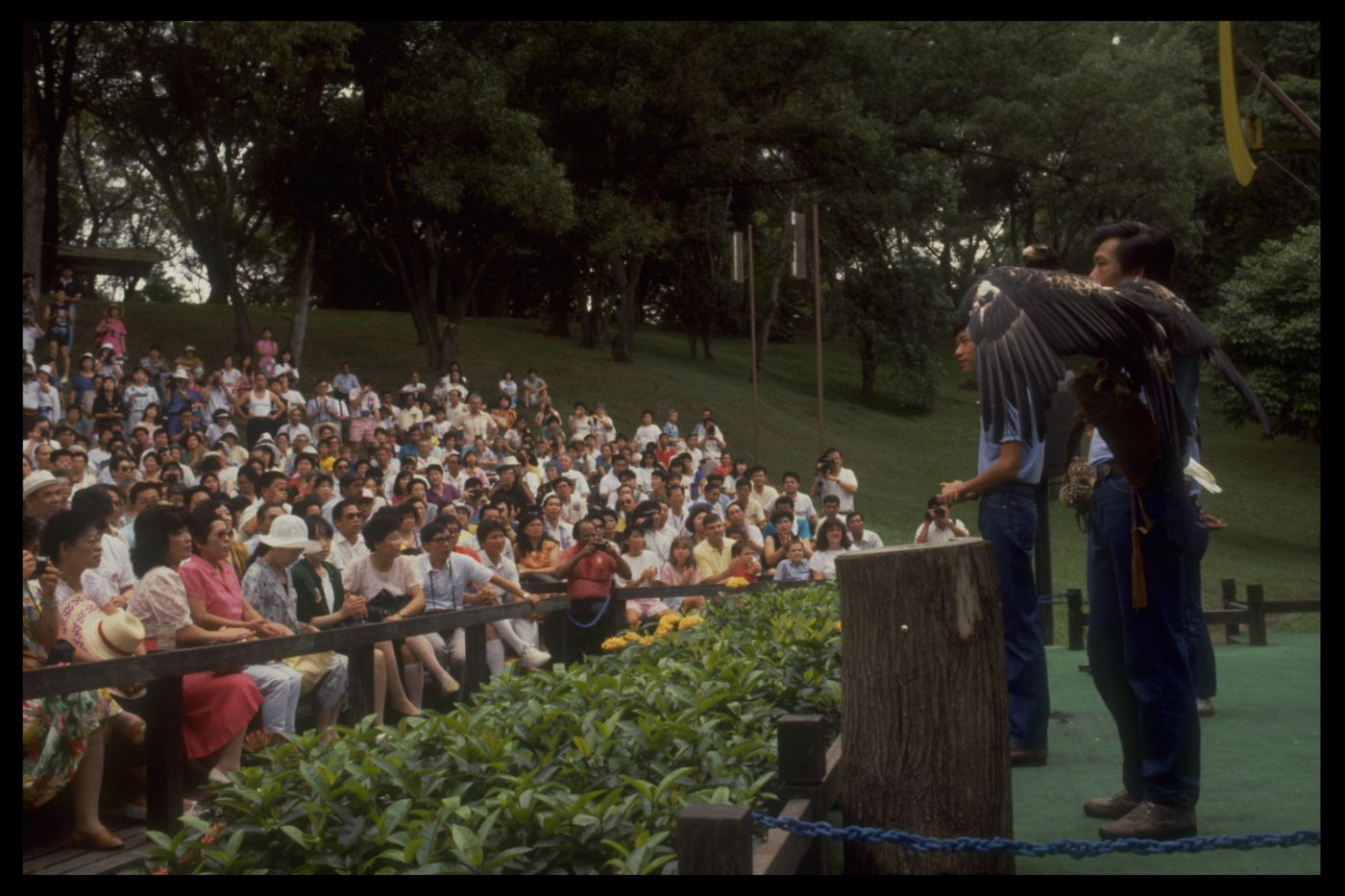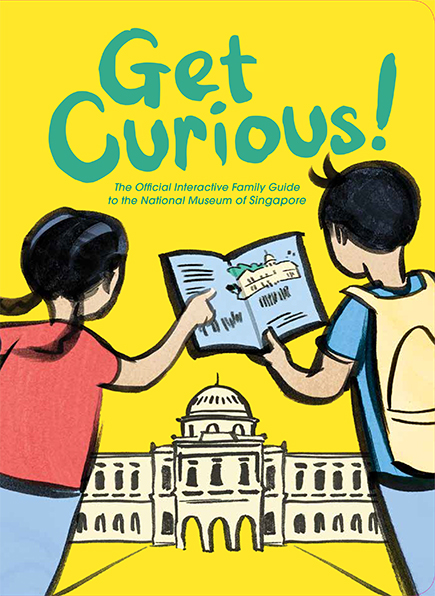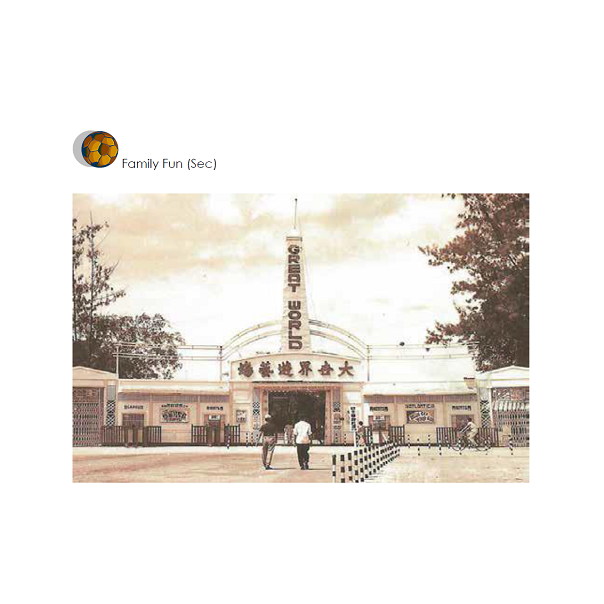This globular-shaped ewer has a 'makara'-dragon spout and a handle in the form of a dragon's body. Moulded cloud motifs decorate the shoulder while bands of lotus petals adorn the top and the flat base of the jar. The vessel shows the remains an ivory-white glaze that is now faded.Vietnamese potters often moulded or carved animal heads on spouts of jars. The makara, a sea monster, usually with the head of an elephant and the body of a fish, is the creature most commonly represented. It is associated with water as a source of life and symbolises abundance and strength. The Thai version is descibed as crocodile-like in appearance. The lotus petal is another common decorative Buddhist motif that is typical of many ivory-glazed wares. It is found on vessels such as offering dishes and large covered jars. The frequent appearance of the lotus motif reflects the rising importance of Buddhism, which was Vietnam's state religion during this period.Vietnam entered the international trade during the 14th century and produced the greatest volume and variety of wares for Southeast Asia, particularly Indonesia, the Philippines and Malaysia. However, by the 16th century, due to intense competition from the Chinese kilns, the export of Vietnamese wares to these markets was greatly reduced.




